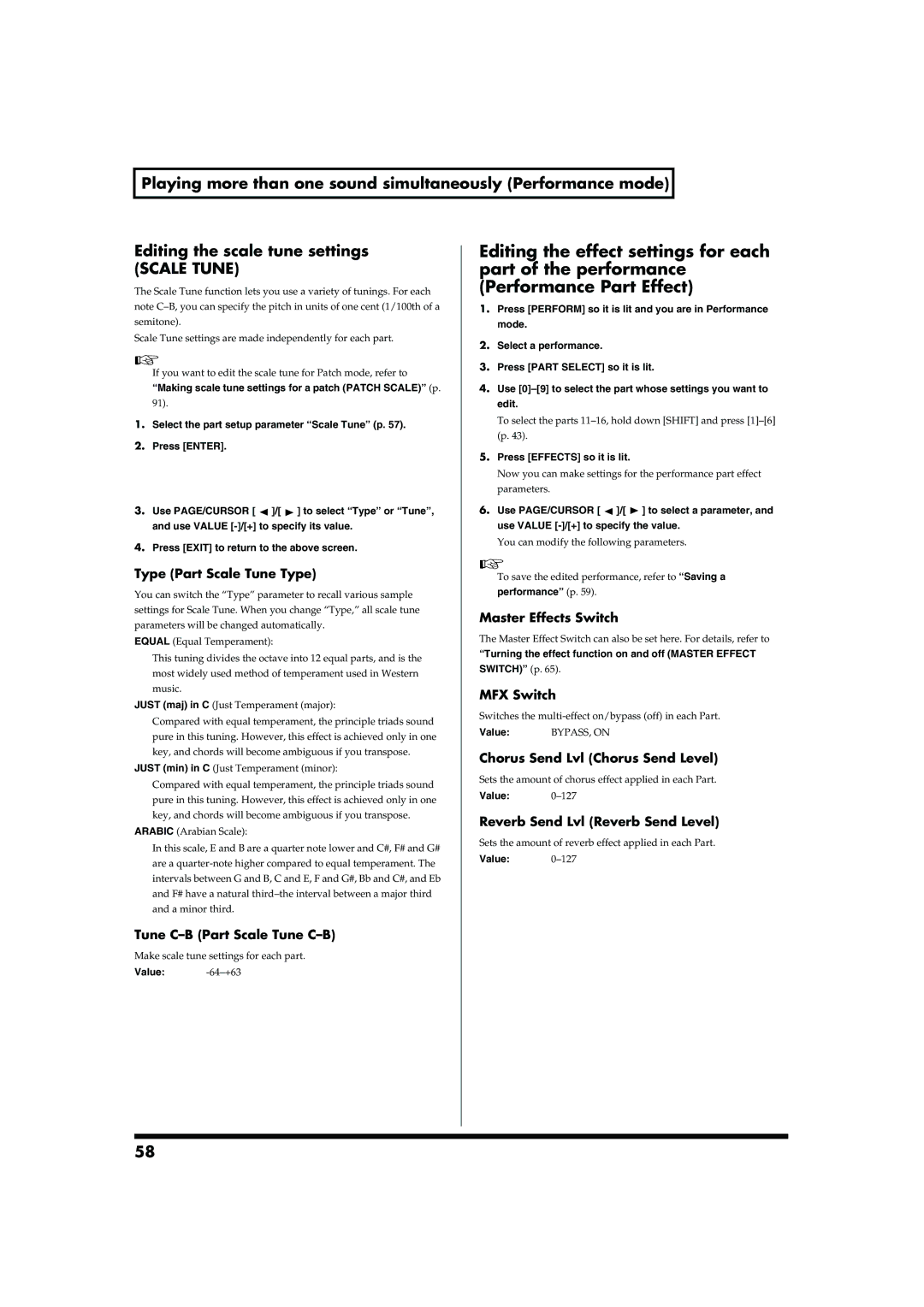
Playing more than one sound simultaneously (Performance mode)
Editing the scale tune settings
(SCALE TUNE)
The Scale Tune function lets you use a variety of tunings. For each note
Scale Tune settings are made independently for each part.
If you want to edit the scale tune for Patch mode, refer to
“Making scale tune settings for a patch (PATCH SCALE)” (p.
91).
1.Select the part setup parameter “Scale Tune” (p. 57).
2.Press [ENTER].
fig.r06-54c_40
3.Use PAGE/CURSOR [ ![]() ]/[
]/[ ![]() ] to select “Type” or “Tune”, and use VALUE
] to select “Type” or “Tune”, and use VALUE
4.Press [EXIT] to return to the above screen.
Type (Part Scale Tune Type)
You can switch the “Type” parameter to recall various sample settings for Scale Tune. When you change “Type,” all scale tune parameters will be changed automatically.
EQUAL (Equal Temperament):
This tuning divides the octave into 12 equal parts, and is the most widely used method of temperament used in Western music.
JUST (maj) in C (Just Temperament (major):
Compared with equal temperament, the principle triads sound pure in this tuning. However, this effect is achieved only in one key, and chords will become ambiguous if you transpose.
JUST (min) in C (Just Temperament (minor):
Compared with equal temperament, the principle triads sound pure in this tuning. However, this effect is achieved only in one key, and chords will become ambiguous if you transpose.
ARABIC (Arabian Scale):
In this scale, E and B are a quarter note lower and C#, F# and G# are a
Tune C–B (Part Scale Tune C–B)
Make scale tune settings for each part.
Value:
Editing the effect settings for each part of the performance (Performance Part Effect)
1.Press [PERFORM] so it is lit and you are in Performance mode.
2.Select a performance.
3.Press [PART SELECT] so it is lit.
4.Use
To select the parts
5.Press [EFFECTS] so it is lit.
Now you can make settings for the performance part effect parameters.
6.Use PAGE/CURSOR [ ![]() ]/[
]/[ ![]() ] to select a parameter, and use VALUE
] to select a parameter, and use VALUE
You can modify the following parameters.
To save the edited performance, refer to “Saving a performance” (p. 59).
Master Effects Switch
The Master Effect Switch can also be set here. For details, refer to
“Turning the effect function on and off (MASTER EFFECT
SWITCH)” (p. 65).
MFX Switch
Switches the
Value: | BYPASS, ON |
Chorus Send Lvl (Chorus Send Level)
Sets the amount of chorus effect applied in each Part.
Value:
Reverb Send Lvl (Reverb Send Level)
Sets the amount of reverb effect applied in each Part.
Value:
58
